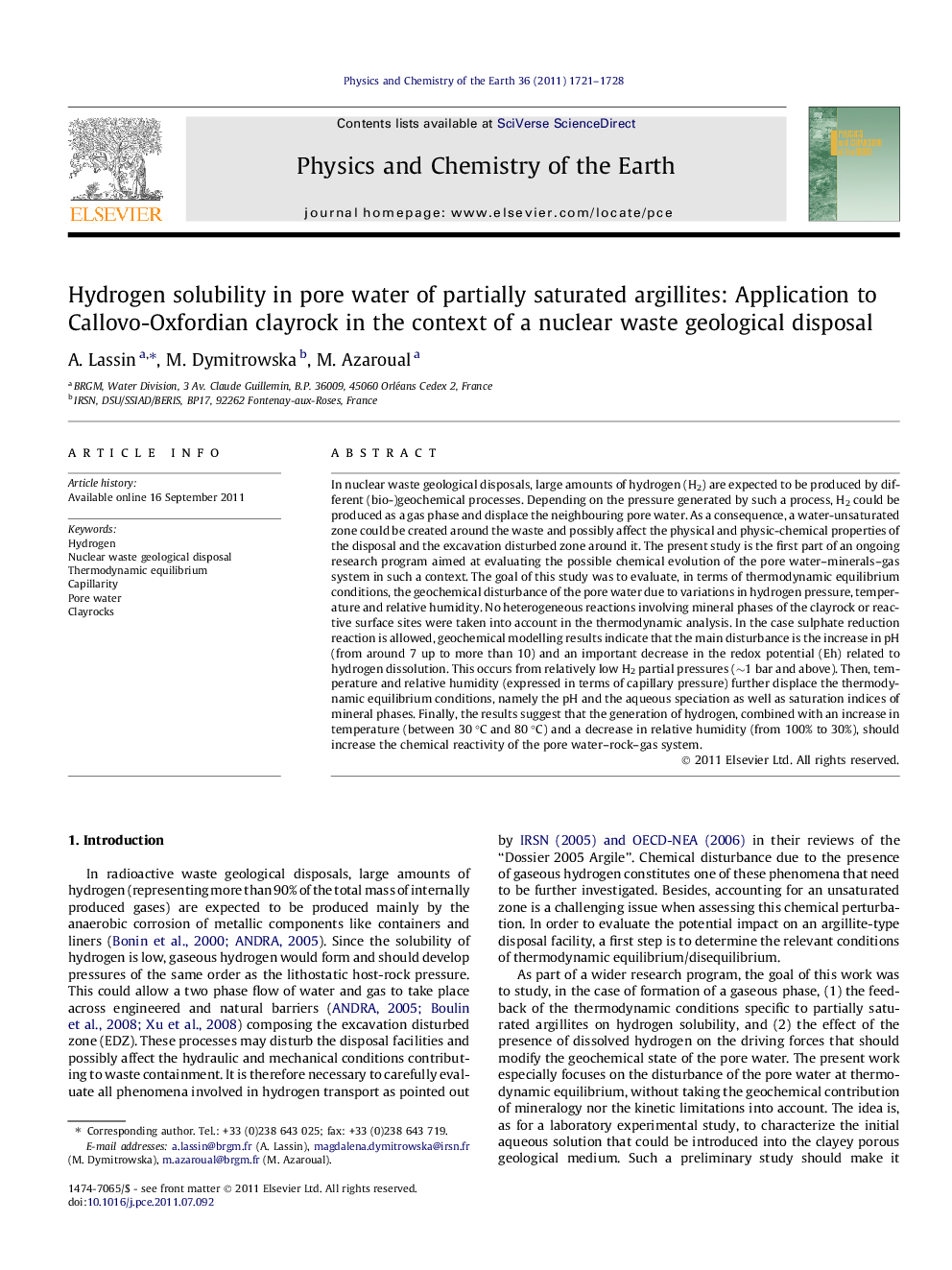| کد مقاله | کد نشریه | سال انتشار | مقاله انگلیسی | نسخه تمام متن |
|---|---|---|---|---|
| 4721253 | 1639372 | 2011 | 8 صفحه PDF | دانلود رایگان |

In nuclear waste geological disposals, large amounts of hydrogen (H2) are expected to be produced by different (bio-)geochemical processes. Depending on the pressure generated by such a process, H2 could be produced as a gas phase and displace the neighbouring pore water. As a consequence, a water-unsaturated zone could be created around the waste and possibly affect the physical and physic-chemical properties of the disposal and the excavation disturbed zone around it. The present study is the first part of an ongoing research program aimed at evaluating the possible chemical evolution of the pore water–minerals–gas system in such a context. The goal of this study was to evaluate, in terms of thermodynamic equilibrium conditions, the geochemical disturbance of the pore water due to variations in hydrogen pressure, temperature and relative humidity. No heterogeneous reactions involving mineral phases of the clayrock or reactive surface sites were taken into account in the thermodynamic analysis. In the case sulphate reduction reaction is allowed, geochemical modelling results indicate that the main disturbance is the increase in pH (from around 7 up to more than 10) and an important decrease in the redox potential (Eh) related to hydrogen dissolution. This occurs from relatively low H2 partial pressures (∼1 bar and above). Then, temperature and relative humidity (expressed in terms of capillary pressure) further displace the thermodynamic equilibrium conditions, namely the pH and the aqueous speciation as well as saturation indices of mineral phases. Finally, the results suggest that the generation of hydrogen, combined with an increase in temperature (between 30 °C and 80 °C) and a decrease in relative humidity (from 100% to 30%), should increase the chemical reactivity of the pore water–rock–gas system.
Journal: Physics and Chemistry of the Earth, Parts A/B/C - Volume 36, Issues 17–18, 2011, Pages 1721–1728